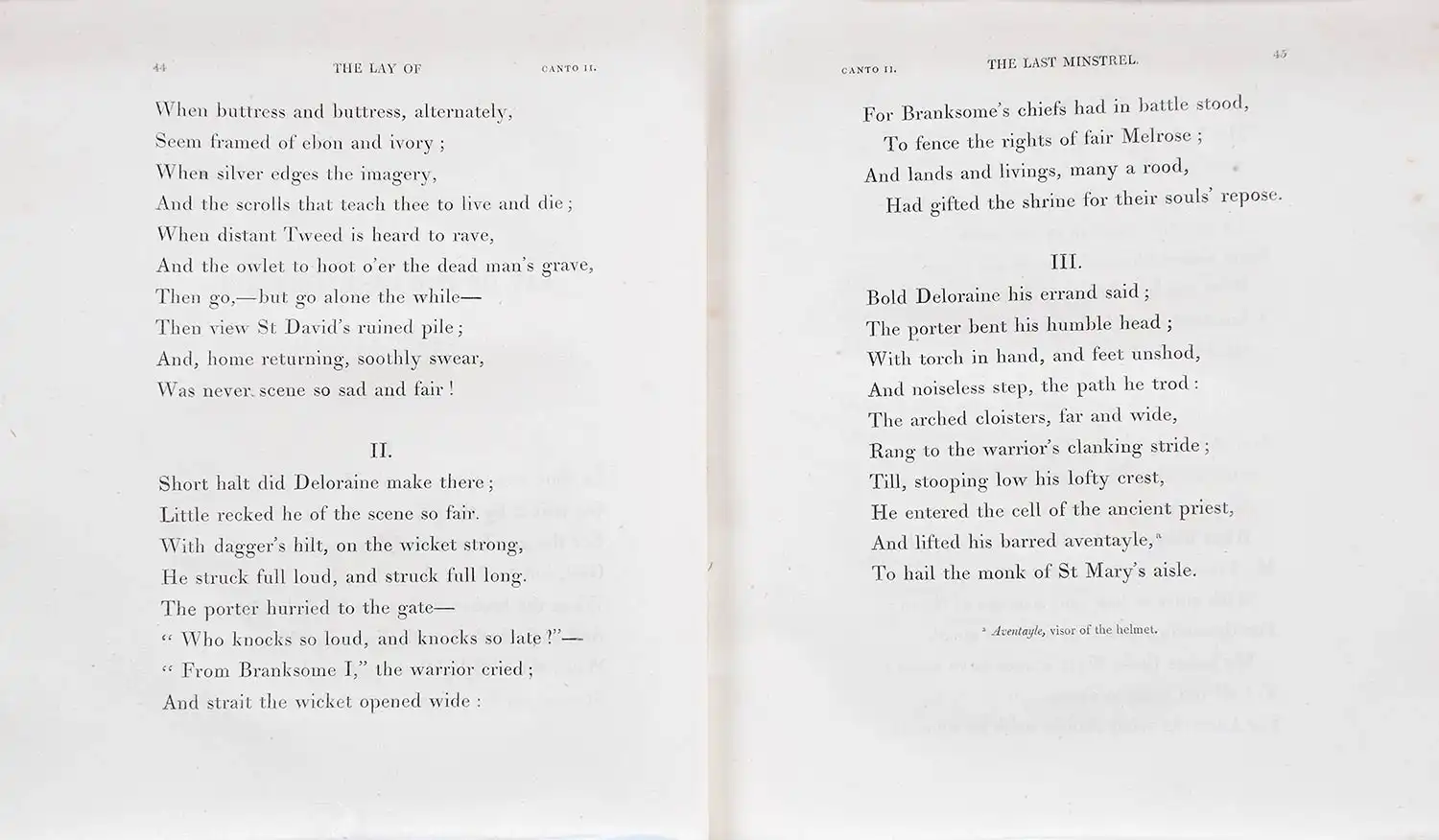
Sir Walter Scott. The lay of the last minstrel: a poem with ballads and lyrical pieces. 8th edition. London: Printed for Longman, Hurst, Rees and Orme, and A. Constable and Co., Edinburgh; by James Ballantyne and Co., Edinburgh, 1810.
Scott’s first important original work, The lay of the last minstrel is a metrical romance whose topic is a mid-sixteenth century Border feud. More than 150 years later, the story is sung by an aged Minstrel to Ann, Duchess of Buccleuch, who, in return for her hospitality, hears the story of her ancestors.
This poem brought Scott instant fame, with six editions appearing within three years, and selling 27,000 copies within a decade - huge sales for the time. Scott’s description of the moonlit Melrose Abbey (Canto II, stanza I) brought an influx of sightseers to the ruined Abbey, which also became a popular subject for nineteenth century painters.